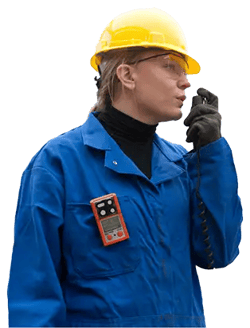When firefighters encounter fire and smoke, they wear a self-contained breathing apparatus (SCBA) to protect themselves from hazards in the air. Even after the heavy fire is knocked down, unseen gases within the smoke will remain, keeping firefighters in harm’s way.
Smoke contains many toxic gases, such as carbon monoxide (CO) and hydrogen cyanide (HCN), which are silent killers. These two compounds are known as the “Toxic Twins” because they attack the body in poisonous ways.
Carbon monoxide is a simple asphyxiant, meaning it binds with the hemoglobin, the protein of the red blood cells, so it no longer can carry oxygen throughout the body. It suffocates you from the inside of your body. Hydrogen Cyanide affects the central nervous system (CNS) and the respiratory system. After inhalation exposure, symptoms begin within seconds to minutes; death may occur within minutes.
Overhauls (salvage and clean up) after a fire seem to be when most firefighters are exposed to CO and HCN. The fire is knocked down and a firefighter is looking for hot spots or fire extension, and suddenly he’s running out of air. If he decides to take off his SCBA mask, he must first check the air to make sure he’s not exposing himself to deadly gases. CO and HCN are colorless gases and are present in the light-colored smoke left after a fire. Visual identification is not a reliable way to determine the presence of toxic gases. It doesn’t take much time or effort to use a gas detector to identify invisible hazards.
The gas detectors available today are easy to use and offer advanced safety features.
The Ventis Pro5 Multi-Gas Monitor offers features that improve safety for firefighters. Man-down and panic alarms can alert nearby responders when someone is injured or knocked unconscious. Customizable text messages can provide safety reminders at start-up, for example, “Use SCBA when CO is above 35 ppm,” or “Wear SCBA for HCN above 5 ppm.”
Configuration of the instruments also allows for more application coverage thanks to sensor flexibility. Now when responding to and investigating combustible gas alarms or residential CO alarms, firefighters need only one gas detection instrument.
Want to learn more about using the latest gas detectors for fire service? Visit our Ventis Pro product page.



